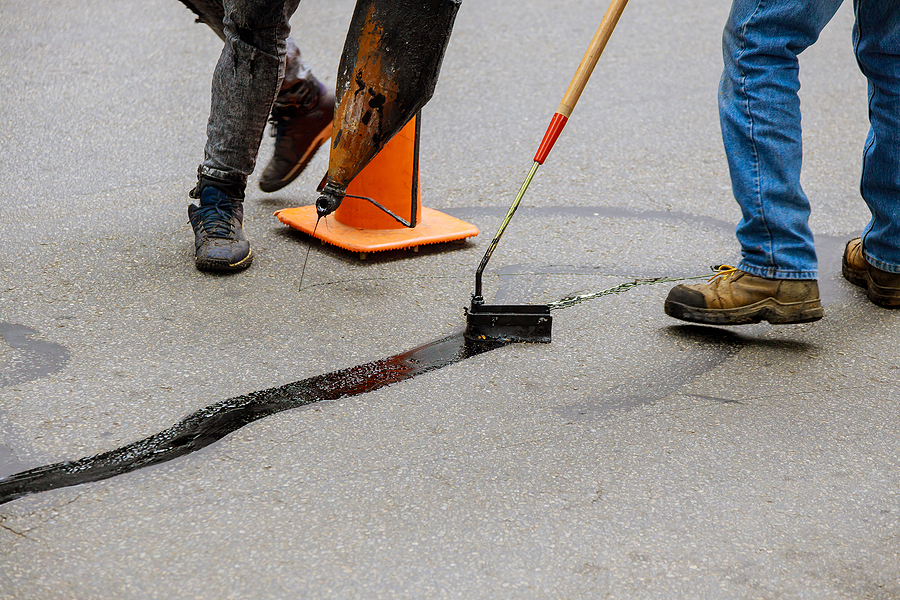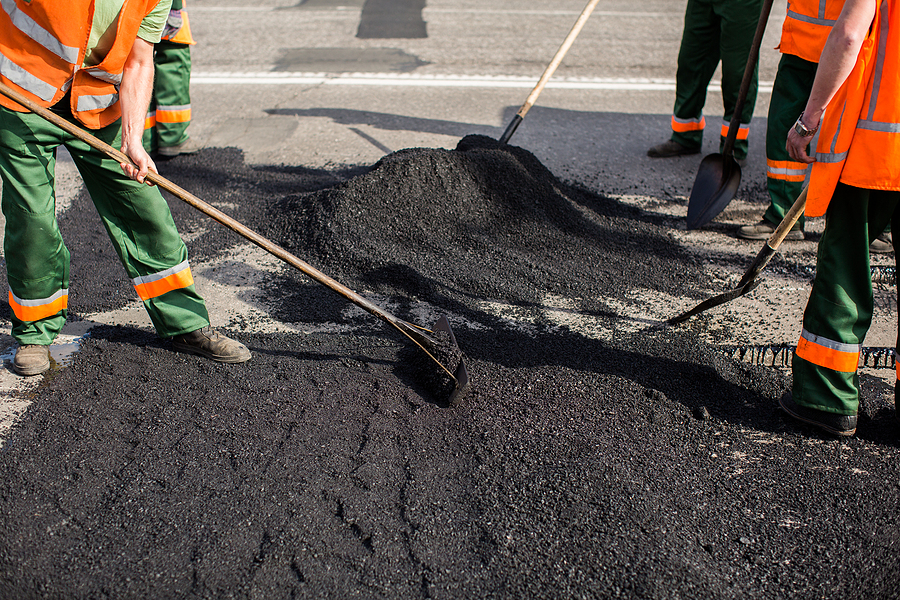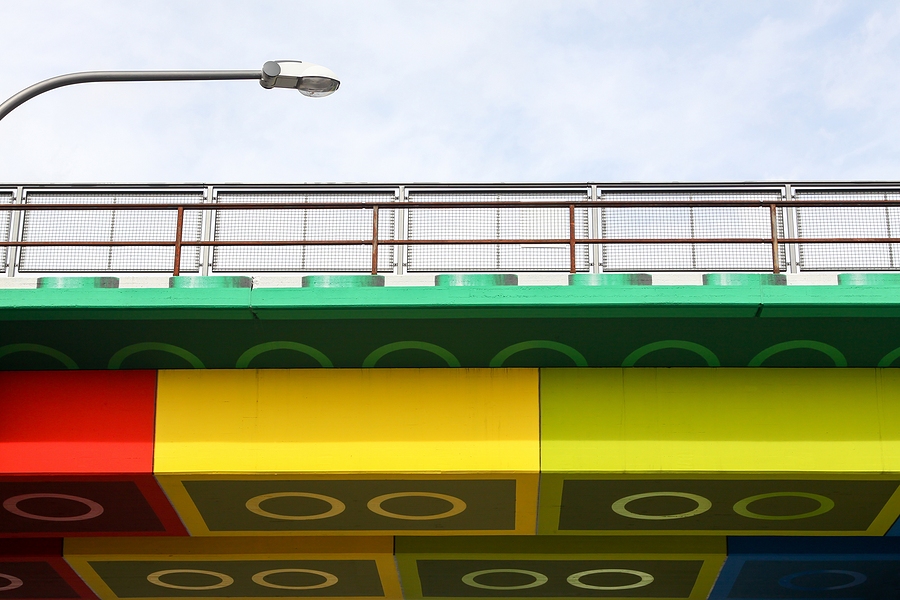How Do Heatwaves Affect Road Surfaces?
Winter is normally blamed for causing damage to road surfaces, but extreme heat during the summer can also have an impact on the quality of the tarmac. Read on to find out more.
Cold weather often results in the formation of potholes in the road surface, thanks to water freezing in the cracks. When the temperature drops, the water expands as it turns to ice, which causes cracks to widen.
As the UK experiences a lot of temperature changes, the pavement contracts and expands regularly, eventually weakening the road surface. When it becomes really damaged, this results in potholes.
In fact, Britain is one of the worst countries for road surfaces, coming 37th out of 141 nations in the World Economic Forum’s Road Quality Index. In fact, Saudi Arabia, Egypt, Namibia, and Azerbaijan all ranked higher than the UK, with Singapore taking the top spot.
Speaking with AGG Net, Asphalt Industry Alliance (AIA)’s chair Rick Green explained it is not just cold weather that affects road, however.
“In extremely high temperatures the road surface doesn’t ‘melt’ but the bitumen in it can soften and the material particles become more ‘mobile’,” he stated.
Mr Green commented that when there is prolonged hot weather and slow-moving heavy traffic, the risk of deterioration of the road surface grows.
Engineers in the UK have a big challenge on their hands, as they need to create road surfaces that can withstand a huge range of temperatures. An asphalt road in Britain has to be able to cope with -20C to +60C, for instance.
Despite this, unprecedented heatwaves, such as the record-breaking temperatures experienced earlier this month, can cause damage to the roads.
The AIA spokesperson noted there is improving research into modern road-building materials so that they can withstand a larger temperature range. However, rising temperatures, due to climate change, reduced budgets, and growing costs makes it hard for highway authorities to build roads that can last a long time.
As a result, Britain’s pothole problem is rapidly getting worse. Last year, RAC revealed it dealt with the largest proportion of pothole-related issues (1,810) in any third quarter for 15 years.
Despite July to September typically being one of the quietest periods for road surface breakdowns, they represented 1.2 per cent of all call-outs during the three months.
For the whole of 2021, the RAC attended 10,123 pothole-related breakdowns, including broken suspension springs, distorted wheels and damaged shock absorbers. This is a ten per cent increase from 2019, and represents the highest annual figure since 2018.
These breakdowns accounted for 1.5 per cent of all RAC call-outs, which is an increase from 1.2 per cent in 2020 and 1.1 per cent in 2019.
Head of roads policy at RAC Nicholas Lyes stated: “Potholed roads are a menace, not a mere annoyance – they can cause thousands of pounds of unnecessary damage to drivers’ vehicles, make using our roads uncomfortable and can be a serious road safety hazard for anyone on two wheels.”
He added: “Not getting our roads into a decent shape is simply storing up more problems – and more expense – for the future.”
Looking for surfacing contractors in Hull? Call us today.
Read moreFour Major Roads In Yorkshire To Be Resurfaced
Resurfacing work will take place on four major routes in North Yorkshire’s Harrogate this month.
North Yorkshire County Council has revealed improvements will be made on Claro Road, Ainsty Road, Devonshire Place and Coach Road.
Work will begin on Sunday (July 24th) and will take three weeks to complete, causing some road closures in the meantime.
Executive member for highways and transportation at the local authority Keane Duncan said the council is undertaking an “extensive programme of works across the county to improve the condition of our vast network”.
While vehicles will not be allowed to enter these roads during times of resurfacing work, pedestrians will still be able to access the routes. Motors will be diverted with signs ahead of the closed roads, and advanced warning notices will be placed in each location prior to the roadworks.
Councillor Chris Aldred, representative of High Harrogate and Kingsley Division, said: “This resurfacing programme is vital in improving these key residential and commuter routes in Harrogate which have deteriorated over the years.”
He apologised for the disruption the work will cause during the summer months, but added it will be worth it in the long-run.
While North Yorkshire County Council has put resurfacing work as one of its main priorities, it is not one of the top ten areas with the worst potholes in the UK.
The Sun revealed Northumberland was the worst place in Britain for its uneven road surfaces, with 180,993 reported holes. This was followed by Cornwall with 88,129 and Kirklees with 77,552.
For surfacing contractors in Hull, give us a call today.
Read moreA Quick Guide to Surfacing
The upkeep of our roads, driveways, parks, and residential footpaths all comes down to good surfacing. Contractors undertake work to ensure that our routes of travel are kept up to standard and are not closed off unnecessarily. Ideally, this kind of work is done without delay or inconvenience to the public, although sometimes factors can complicate things.
In Chippenham recently, there has been much talk of a new road which for the moment “goes nowhere”. This road, designed to relieve pressure on the town centre, was originally slated to be ready for Easter. This time frame, however, has been pushed back over the last couple of months due to what has been described as “snagging” work still to be done.
Meanwhile in Shoreham, West Sussex, resurfacing works have been combined with road safety so that smoother and clearer roundabouts may be opened to the public. In particular, the application of new road markings is hoped to reduce, if not remove, the need for road users to change lanes as they circulate a roundabout.
With all the modern advances in the industry, as well as the techniques utilized by professional surfacing contractors, it is worth noting that the first stone paved roads have been traced back to about 4,000 B.C. in Mesopotamia and the Indian subcontinent.
In the Roman Empire roads were important for the movement of troops as well as goods. Some of the roads laid down during this period of history are still in use today, and the fundamental techniques used by the Romans form the basis of our modern roads.
Today there are sound options available for all surfacing needs. Whether a private driveway or a playground, a car park, or a residential road, the practice of surfacing and maintaining is a job that always needs doing.
Read morePlanned Resurfacing Work In Lincolnshire Disrupted
Residents in North East Lincolnshire were disappointed when the local authority could not carry out its planned resurfacing works on the scheduled date, as a result of parked cars on the streets.
North East Lincolnshire Council revealed cars on West Street, George Street and Hart Street prevented workers from carrying out the project.
Once the vehicles were removed, the contractor was able to go ahead with the works. However, only part of William Street and one side of Blundell Avenue could be resurfaced for the same reason.
The council stated the contractor will return until the end of the week (June 24th) to finish the jobs, as well as resurface Reynolds Street.
However, after reminding residents to remove their vehicles to allow for the project to take place, the council stated: “If, on Friday June 24th, the contractor is still unable to carry out the works, then road surfacing will not be completed for that street in this year’s programme of works.”
The council has responsibility for 386 miles of adopted roads and carries out regular safety inspections, and possible repairs, for all of the streets it looks after.
Residents who see that defects have occurred before the next inspection is due can report the problem on its website to bring the issue to the attention of the authority.
In the case it cannot permanently repair the problem immediately, it will endeavour to make a temporary fix, depending on the risk to the public.
For surfacing contractors in Hull, give us a call today.
Read more
The Most Unusual Construction Materials Ever Used
From heavy construction to surfacing contractors, the materials used to make most of the infrastructure we use every day.
From Portland cement and concrete to tarmac, steel and clay bricks, most of the building materials we commonly see are familiar to the vast majority of engineers, contractors and pedestrians alike.
However, amongst the more familiar materials we see being used every day in huge numbers, there are a lot of more unusual and strange materials that have previously been used in the construction of large projects, some of which may be very familiar.
Here are some of the most bizarre.
Lego Bricks
Whilst children and adults throughout the world know the potential of Lego bricks to bring an idea to life and create houses for little toy people, Lego has actually been used as a legitimate building material.
As part of the series James May’s Toy Stories, the former Top Gear and The Grand Tour presenter used 3.3m bricks and over a thousand volunteers to put together an actual Lego house that he spent the night in, to highlight its potential as a modular building material.
Unfortunately, for various reasons the house was dismantled soon after the episode was aired.
Works Of Fiction
One of the biggest and most important pieces of road infrastructure in recent years is the construction of the M6 toll road in 2003 to reduce congestion on one of the busiest motorways in the country.
However, what many people might not be aware of is that the top layer of the road itself is actually made from 2.5m old books.
Specifically, the Mills and Boon range of bodice rippers that were either damaged or at the end of the fast-moving line were pumped up and served as a top layer.
They served quite a few purposes at once; they absorbed sound very well and would form a sort of glue that held the tarmac and asphalt layers together.
Salt
One of the biggest sources of salt on earth is the Khewra Salt Mines, and because the slightly pinkish salt is so plentiful, it is not only mined and sprinkled on chips but also used to make buildings.
There is a post office and even a mosque made of the mines, used by miners who would spend a long time extracting salt.
Outside of the Himalayas, there is also the Palacio de Sal in Spain, which is a luxury hotel made of over one million blocks of salt.
Beer Bottles
In Thailand, in the district of Khun Han, monks and locals alike were alarmed by the number of bottles that were washing up in the water and wanted to have a solution that would help the environment in several ways.
Their answer was to collect empty beer bottles from the locals and build a temple out of them, the Wat Pa Maha Chedi Kaew (Temple of a Million Bottles). After finishing the main temple after two years of work in 1986, they have continued to expand the site to over 20 other buildings.
These include a crematorium, prayer rooms, a water tower, bungalows for the monks themselves as well as facilities for tourists. Even the beer bottle caps are used to make mosaics.
Read more




